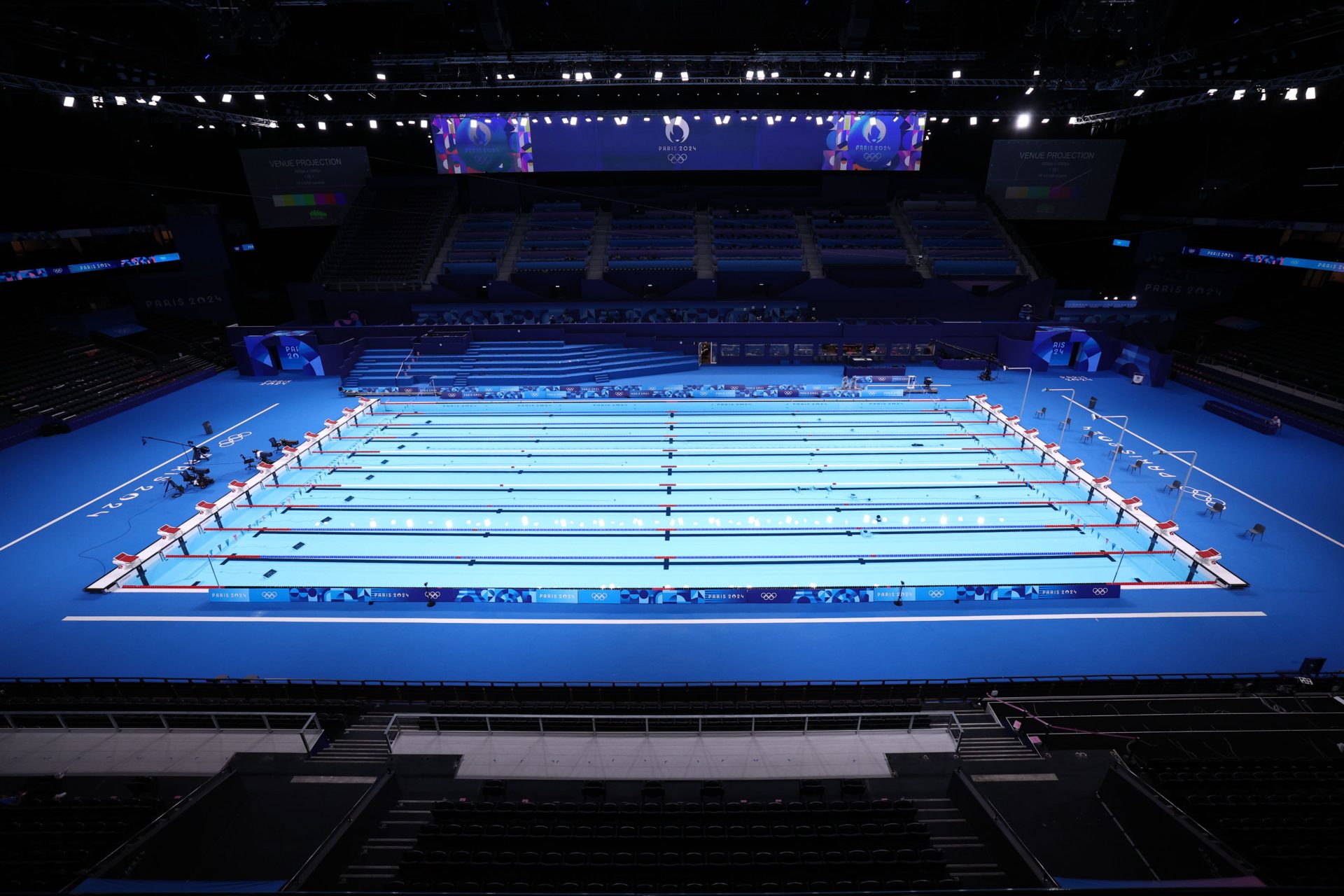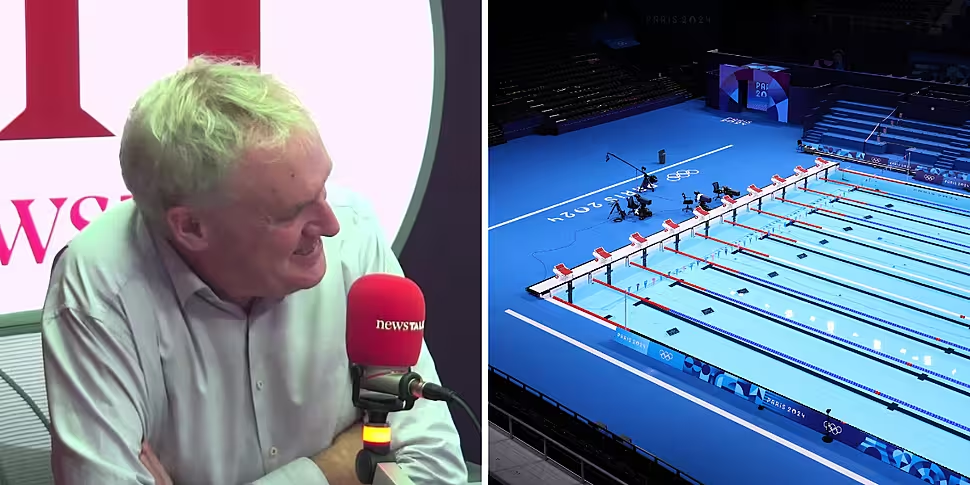Paris’ Olympic pool is ‘too shallow’ and slowing swimmers down, according to Professor Luke O’Neill.
This year’s competition has failed to make a full splash, with only one world record broken in the first five days of swimming events.
That compares with six new swimming world records set at Tokyo in 2021 and eight at Rio in 2018.
Trinity Professor Luke O’Neill said people suspect swimmers are going slower because the pool is “too shallow”.
“There's physicists examining this now to see if the slightly more shallow water is creating a different dynamic when you're swimming through it,” he told The Pat Kenny Show.
“The shallowness of the water, that comes into the forces that are acting on the body.”
The temporary pool at La Défense Arena is shallower than other Olympic pools at 2.15 metres deep.
It’s deeper than the minimum two metres required – but it’s much shallower than the standard three metres used in Tokyo and Rio.
 Aerial view of the Olympic Pool of the Paris 2024 Games. Image: LE PICTORIUM / Alamy Stock Photo
Aerial view of the Olympic Pool of the Paris 2024 Games. Image: LE PICTORIUM / Alamy Stock PhotoThe theory is that in shallower pools when swimmers dive in, they face more turbulence because of waves bouncing back to the surface of the water.
The construction company that made the pool in Paris, however, argued that there is nothing “technically” wrong with the pool.
There are other factors that give swimmers an advantage – including their uniforms.
Most modern uniforms are highly elasticated to compress muscles while swimming, according to Prof O’Neill.
This decreases friction in the water, allowing them to speed up.
Olympic swimsuit technology
Prof O’Neill explained in 2009, Speedo developed a new material for Olympic swimsuits called non-cable or non-fibre polyurethane.
“Suddenly records began to be broken,” he said.
“The following year, the World Championships 43 swimming records were broken that year, and that seemed mysterious.
“It was the swimsuit that gave them more buoyancy - the polyurethane was capturing a bit of air, and they were floating 1% higher in the water.”
The swimming authorities then banned the material because it was giving some athletes an unfair advantage.
 Daniel reacts after winning the men's 800m freestyle relay final by an Olympic Record in the Paris Olympic. Image: Associated Press / Alamy Stock Photo
Daniel reacts after winning the men's 800m freestyle relay final by an Olympic Record in the Paris Olympic. Image: Associated Press / Alamy Stock PhotoProf O’Neill explained, however, that companies still try to find ways to dress their athletes to their advantage.
“The current optimal swimsuit still has some kind of polyurethane in it,” he said.
“There’s less drag if you have polyurethane there.
“What got me was they're putting a coating on them now that's really sort of an anti-friction.
“That was discovered to coat satellites in space to make satellites move without friction through space.”
These enhancements might only give athletes a 1% advantage – but in the Olympics, 1% literally makes all the difference between the podium and the sidelines.
Prof O'Neill said Ireland doesn't seem to use the latest swimming technology - but the team has still secured two medals in swimming so far this season.
Mona McSharry secured the bronze in the Women's 100 Metre breaststroke, while Daniel Wiffen won Ireland's 12th ever gold medal in the Men's 800 Metre Freestyle.









